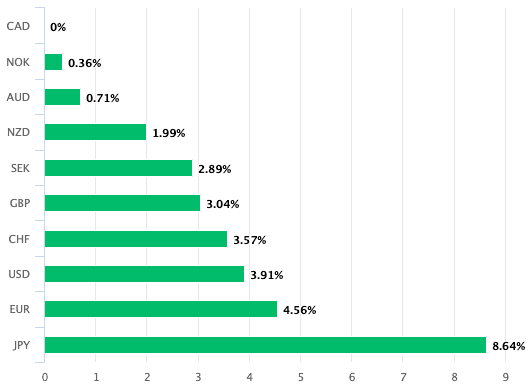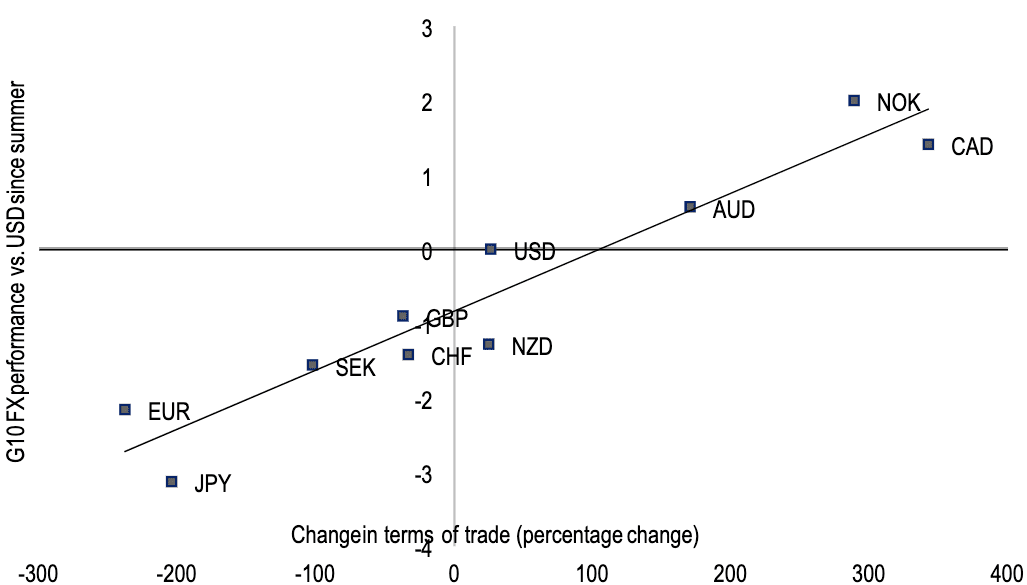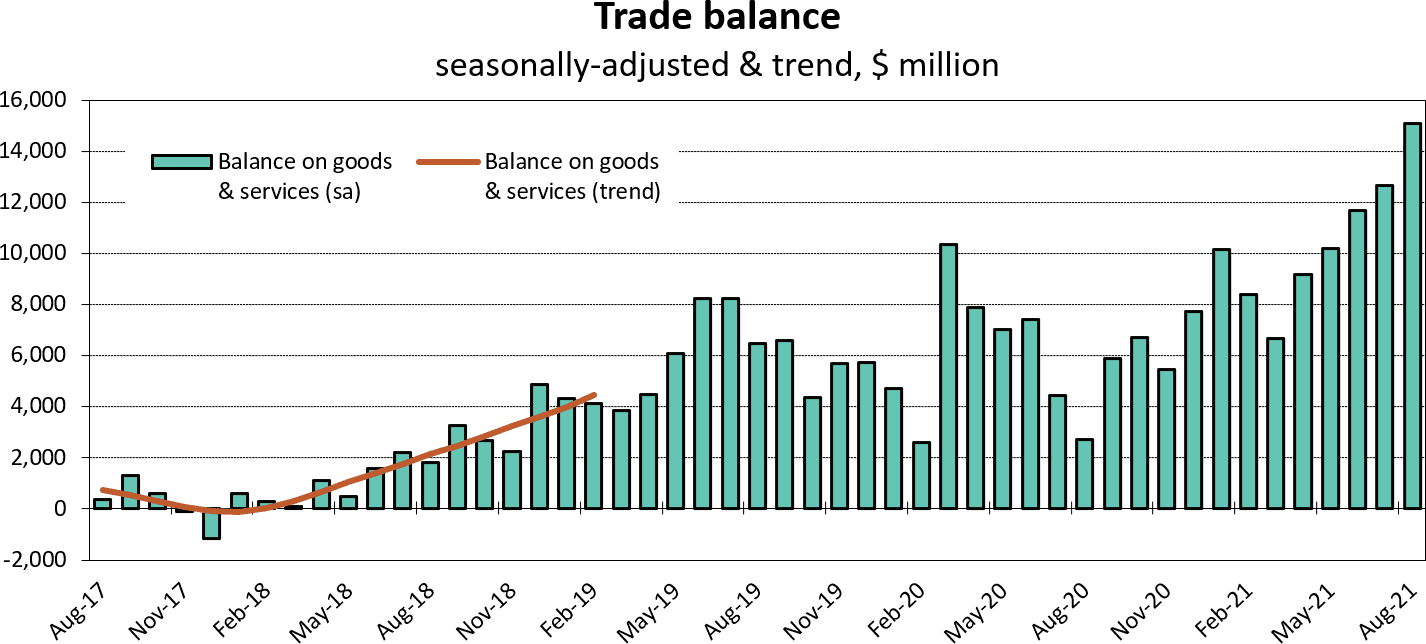Australian Dollar and Canadian Dollar can Continue to Benefit from the Energy Trade
- Written by: Gary Howes

Image © Adobe Images
Spot Market Rate at Publication:
GBP/AUD: 1.8472
"In theory, an improvement in the terms of trade should lead to a stronger currency," says research Athanasios Vamvakidis at Bank of America.
For now, this is theory is a reality for global foreign exchange and it can continue to be so for a while yet.
Research from Bank of America finds the Australian Dollar, Canadian Dollar and Krone are the top performing major currencies since the northern hemisphere summer, courtesy of surging commodity prices.
Crucially, the trends that have aided these currencies are likely to continue.
"Since the summer, the best-performing currencies in G10 include NOK, CAD and AUD, while the worst-performing currencies include JPY and EUR. We argue this is primarily driven by sharp changes in the terms of trade during the recent boom in commodity prices and particularly in energy. There may be more to go," says Vamvakidis in a research briefing.
The Canadian Dollar is the top performing major currency of the past month, followed by Norway's Krone and the Australian Dollar.
What unites these currencies is the support they derive from exports of oil and gas, which will be commanding greater returns on a global market desperate for energy.

Above: The Canadian Dollar leads the Krone and Australian Dollar in outperformance stakes over the course of the past month.
Crude oil is Canada's top export, as is the case for Norway. For Australia coal and natural gas are the second and third most important exports.
This set of outperforming currencies are also regularly described as being 'high beta' currencies in that they track the performance of global markets, which have been recovering steadily since the depths of the Covid panic of 2020.
However, Vamvakidis says of late this 'high beta' characteristic has been less of a determinant in the outperformance of the Australian Dollar & co.
"This is not driven by risk sentiment, as global equities have weakened during this time," he says.
Above: Terms of trade change and FX performance. "We see a strong correlation of the change in the terms of trade and G10 FX since the summer" - Bank of America Global Research.
Secure a retail exchange rate that is between 3-5% stronger than offered by leading banks, learn more.
"Sharp moves in commodity prices have led to sharp changes in G10 terms of trade, depending on whether a country is exporting or importing commodities, and particularly energy," says Vamvakidis.
Australia's trade balance is running at record highs, courtesy of ongoing demand for iron ore but more recently thanks to surging demand for coal and natural gas.
It was reported on Oct. 05 that Australia had run up another record trade surplus in August as export earnings surged amidst ongoing strong demand for commodities.
The trade surplus jumped by A$2.4BN to A$15.1BN in August, beating expectations for a reading of A$10BN.
This is the third successive record high for the trade surplus.
"Australia’s widening trade surplus points to robust underlying demand for AUD," says Elias Haddad, an economist with Commonwealth Bank of Australia.
Concerning the Euro and Yen, Bank of America finds these two currencies have been the weakest and have also seen the most deterioration in their terms of trade, again not surprisingly as they are the two G10 economies that import the most energy.
The Pound is less impacted given the production of gas in the North Sea means at least some portion of domestic demand is fulfilled by domestic production.
While UK was self-sufficient in the supply of gas up to 2004 it can now meet only half its own gas needs.
Yet this represents far more self-sufficiency that is the case in the Eurozone and Japan.
Bank of America says the recent trends whereby the currencies of energy producers benefit and those of energy importers struggle can extend.
"These correlations are not always strong, but they are strong right now and point to further momentum in the current FX trends," says Vamvakidis.






